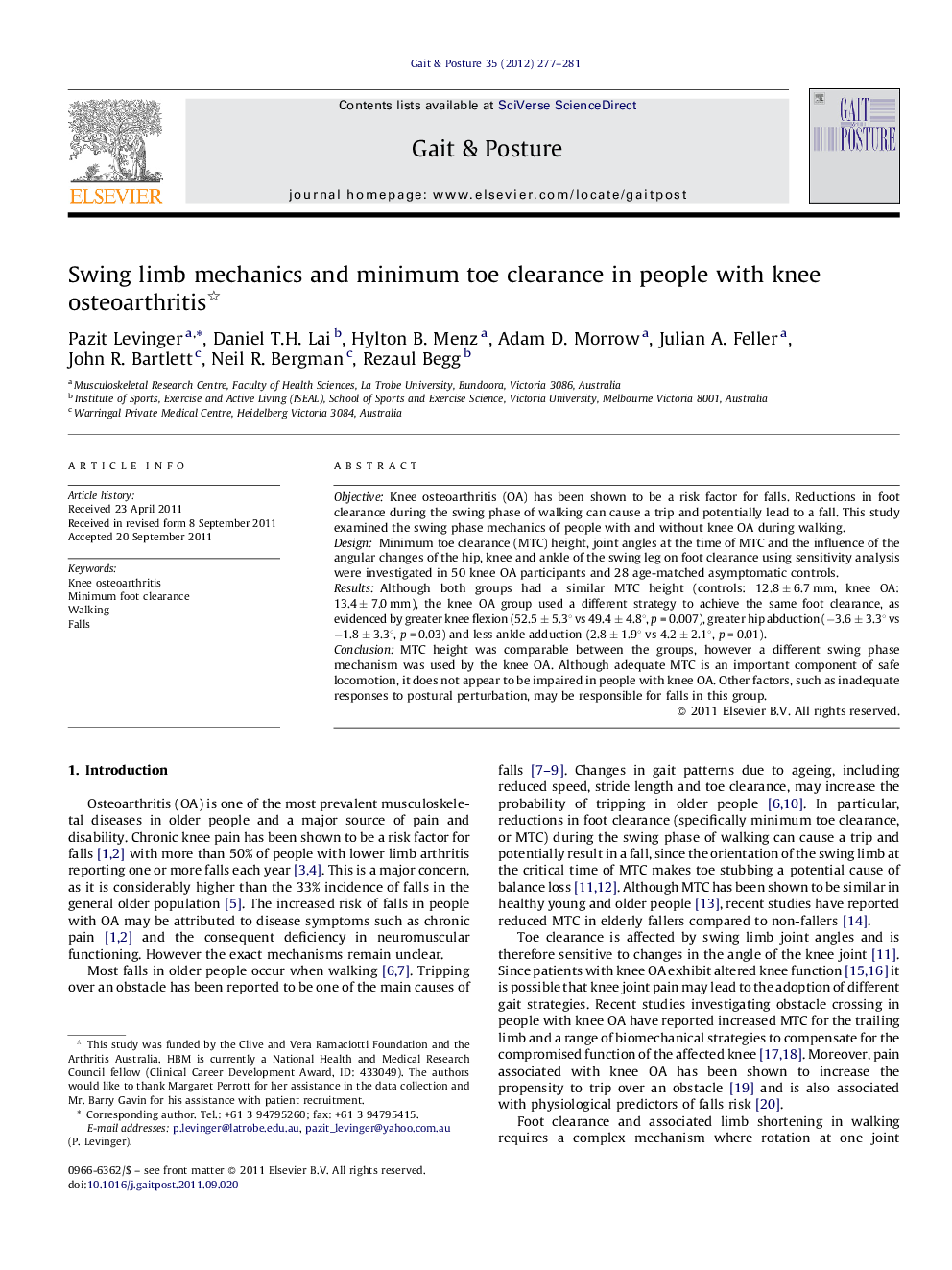| Article ID | Journal | Published Year | Pages | File Type |
|---|---|---|---|---|
| 6208133 | Gait & Posture | 2012 | 5 Pages |
ObjectiveKnee osteoarthritis (OA) has been shown to be a risk factor for falls. Reductions in foot clearance during the swing phase of walking can cause a trip and potentially lead to a fall. This study examined the swing phase mechanics of people with and without knee OA during walking.DesignMinimum toe clearance (MTC) height, joint angles at the time of MTC and the influence of the angular changes of the hip, knee and ankle of the swing leg on foot clearance using sensitivity analysis were investigated in 50 knee OA participants and 28 age-matched asymptomatic controls.ResultsAlthough both groups had a similar MTC height (controls: 12.8 ± 6.7 mm, knee OA: 13.4 ± 7.0 mm), the knee OA group used a different strategy to achieve the same foot clearance, as evidenced by greater knee flexion (52.5 ± 5.3° vs 49.4 ± 4.8°, p = 0.007), greater hip abduction (â3.6 ± 3.3° vs â1.8 ± 3.3°, p = 0.03) and less ankle adduction (2.8 ± 1.9° vs 4.2 ± 2.1°, p = 0.01).ConclusionMTC height was comparable between the groups, however a different swing phase mechanism was used by the knee OA. Although adequate MTC is an important component of safe locomotion, it does not appear to be impaired in people with knee OA. Other factors, such as inadequate responses to postural perturbation, may be responsible for falls in this group.
